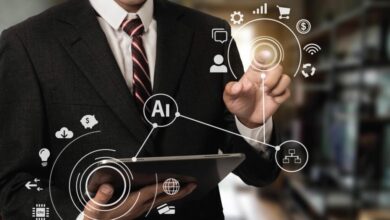Why ‘adaptability is key’ to this data scientist

Integral Ad Science’s Paulo da Costa discusses his day-to-day role as a staff data scientist and why you shouldn’t underestimate the importance of starting small.
Paulo da Costa is a staff data scientist at Integral Ad Science, where he combines computer vision, natural language processing and audio processing techniques to craft models for ad verification and optimisation, focusing on video content.
A typical day for da Costa starts with team updates where project progression and scheduling is discussed, along with allocated time spent writing code, reviewing papers and code evaluations. More team meetings occur throughout the day and the week, where strategies and goals are assessed, aligned and modified as necessary.
“To manage my workload effectively, I employ strategies such as breaking tasks into manageable chunks and blocking them in my calendar for accountability and time management,” says da Costa.
“All in all, each day unfolds a little bit differently, blending teamwork, problem-solving, stakeholder management, testing ideas and personal development, with a few well-deserved coffee breaks sprinkled in for good measure.”
What types of AI/analytics projects do you work on?
Nowadays, most of my projects revolve around the use of deep learning for multimedia and video content. Within that broad domain, I work on different architectures and learning objectives tailored to specific use cases. For example, I could be developing detection models leveraging supervised learning, working on an information retrieval approach to categorise videos efficiently or using self-supervision to learn useful representations without the need of human annotated data. In particular, I enjoy the work we do on multimodality, for example, combining different modalities such as vision and text to create better models that can process diverse data signals just like humans do.
What AI/analytics skills do you use on a daily basis?
In my role, I find myself immersed in a variety of tasks, from handling large amounts of data to delving more into algorithmic development. Regardless of the day’s focus, algorithmic thinking remains paramount, whether it’s applied to data engineering, productionising models or tackling machine learning (ML) challenges.
Adaptability is key, particularly when it comes to the tools I use. From leveraging Spark and SQL for data processing to diving into Python libraries like TensorFlow and PyTorch for model development, versatility is essential. Additionally, good software development skills ensure that the code I write is not only functional but also maintainable and accessible to my peers.
Building a solid foundation in computer science, mathematics and statistics is crucial for navigating the ever-expanding array of tools and technologies. On the softer side, people management skills play an equally vital role. Effective communication, leadership and fostering team growth and engagement are often overlooked but indispensable for success in this field.
What are the hardest parts of working in AI/analytics, and how do you navigate them?
With AI and ML fields moving so fast it can be hard to keep up with the current developments and staying up to date. Effective communication is another cornerstone, especially when dealing with complex concepts. Sometimes it can be hard to articulate ideas clearly and concisely, ensuring smooth collaboration with diverse teams. A large part of my work requires concentration. With the amount of connected devices and tools we have, it can be really hard to minimise distractions and setting aside dedicated time for focused work.
To address these challenges, I have my own set of strategies. Firstly, I prioritise tasks and set clear boundaries to ensure I have the necessary time and resources to accomplish my goals. I also maintain written documentation about the projects I am working on for more efficient and effective communication. Additionally, I consciously limit my use of social media, and I try my best to stay up to date with the latest developments by dedicating time to exploring recent works and staying informed about advancements in the field.
Do you have any productivity tips that help you through the day?
I make an effort to take regular breaks, stay hydrated and ensure I get enough rest whenever possible. I believe that engaging in physical exercise helps me alleviate stress and ensures that I prioritise self-care. I tend to start my day by setting clear goals and priorities. I identify the most critical tasks that need my attention and focus on them first. Moreover, whenever possible, I try to automate repetitive tasks. While it may take some time initially, your future self will likely thank you for it.
What skills and tools are you using to communicate daily with your colleagues?
My daily communication with colleagues involves a mix of work-related and social interactions. Slack is a primary tool for real-time communication with colleagues. I use Slack channels for work-related discussions, sharing updates on projects and coordinating with team members. I use Jira as a project management tool that helps track and assign tasks, track status and prioritise work based on project requirements. Version control is also important for collaborative development in AI projects, ensuring seamless integration of code changes across the team. Furthermore, given our global workforce, we use a lot of video conferencing for meetings and collaborative discussions.
‘Success often involves multiple attempts and occasional setbacks’
How has this role changed as the AI/analytics sector has grown and evolved?
With the rise of deep learning, especially with transformer-based models like BERT and GPT, there’s been a notable shift in how we approach tasks such as natural language processing and computer vision.
This shift includes a change in the amount of data required for training models, where feeding more data to larger models has shown significant performance improvements. These advancements have led to rapid progress in both hardware (GPUs, TPUs) and software (TensorFlow, PyTorch), enabling experimentation with larger models and more complex architectures, driving breakthroughs in various domains.
At the same time, scalability and efficiency are important in today’s landscape, particularly for real-time decision-making, prompting developments in distributed training techniques, model compression and deployment methods for resource-constrained devices. Additionally, the growing use of AI has raised concerns about data privacy and algorithmic accountability, increasing efforts to create more transparent AI systems.
What do you enjoy most about working in AI/analytics?
What I find most fulfilling about working in AI/analytics is the opportunity to solve real-world challenges and work on interesting problems. While the technology itself is fascinating, what truly pushes me is witnessing its practical application and the tangible impact it can have.
Uncovering innovative solutions and observing the positive outcomes they yield is what keeps me motivated on a day-to-day basis. Moreover, I deeply value collaboration and the power of teamwork. Working alongside others allows us to combine our expertise and perspectives, ultimately leading to even better solutions.
What advice would you give to someone who wants to work in AI/analytics?
Dedicate yourself to continuous learning and stay humble in the face of new challenges and knowledge gaps. The field is vast and evolving rapidly, so a solid foundation combined with a willingness to learn will be crucial.
Don’t be afraid to take on new projects and challenges. Collaborate with others, both within and outside your field, to gain diverse perspectives and different points of view. Working in different teams can often lead to more innovative solutions and personal growth. You never know when you’ll find your gem.
Understand that success often involves multiple attempts and occasional setbacks. In the realm of AI and analytics, experimentation is as crucial as achieving results. Embrace uncertainty and try to be comfortable navigating through ambiguity.
Don’t underestimate the importance of starting small. It’s common for newcomers to dive into complex models without establishing simpler baselines. Simplifying when necessary can provide clarity and pave the way for more effective and robust solutions.
Find out how emerging tech trends are transforming tomorrow with our new podcast, Future Human: The Series. Listen now on Spotify, on Apple or wherever you get your podcasts.



